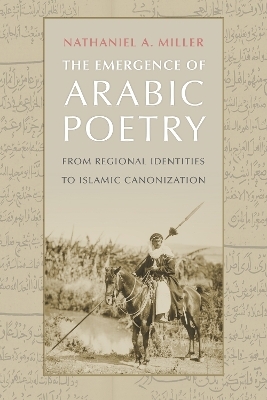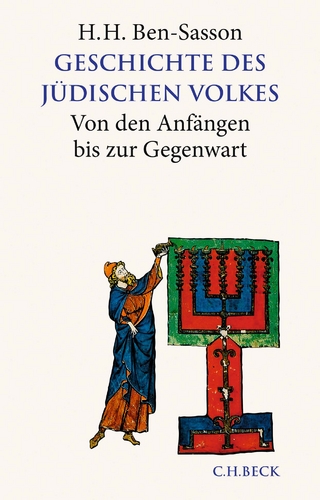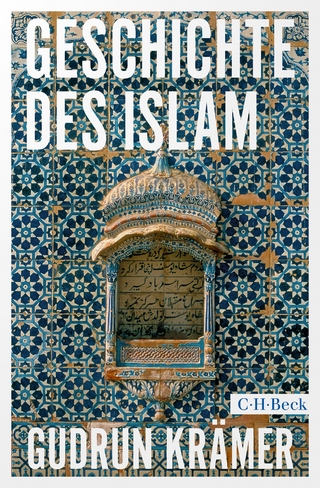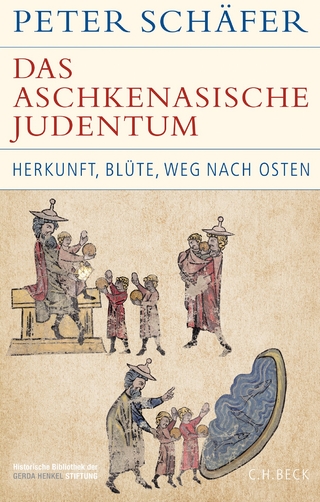
The Emergence of Arabic Poetry
University of Pennsylvania Press (Verlag)
978-1-5128-2530-5 (ISBN)
To interpret the Quran’s Arabic, early medieval Muslims turned to pre-Islamic poetry, a corpus that the Prophet Muhammad’s cousin called “the archive of the Arabs.” While this principle seems straightforward, pre-Islamic Arabs did not, in fact, think of themselves as either pre-Islamic or Arab. The term Arab barely appears at all in pre-Islamic poetry.
The Emergence of Arabic Poetry reexamines this early poetry to reconstruct what pre-Islamic culture actually entailed. Nathaniel A. Miller draws on a wide range of texts, including hundreds of lines of poetry never before translated into English—in addition to new inscriptional, archaeological, and non-Arabic sources—to explore the diverse world of pre- and early-Islamic Arabia in which Islam developed. Miller traces the emergence of two regional identities, and their distinctive poetic traditions, in the Arabian Peninsula of late antiquity: Najdi in the center and northeast and Hijazi in the southwest. The book shows how later efforts of Muslim scholars to use early poetry as an aesthetic, linguistic ideal to interpret the Quran resulted in an image of a unitary, exceptional, and isolated Arab identity and culture. These scholars drew on the Najdi tradition, canonizing its forms as classical Arabic poetry par excellence, and solidifying many tropes of Arabness that are still ubiquitous today: of nomadism, performative generosity, and martial equestrianism. However, Miller argues, it was the neglected Hijazi tradition that was actually more central to the emergence of early Islam.
Early Arabic poetry has been largely overlooked in current scholarship in adjacent fields, largely due to twentieth-century controversies over whether this corpus is legitimate or was forged. In combining a reconstruction of pre-Islamic poetry’s social function with a consideration of the circumstances of its later canonization, The Emergence of Arabic Poetry offers an urgently needed reappraisal of a significant but underexamined poetic corpus, as well as a new literary history of the origins of Arabic poetry from 500 to 750 CE.
Nathaniel A. Miller is an independent scholar and translator, specializing in Arabic language and literature.
Contents
Note on Transliteration, Translations, Dates, and Sources
List of Abbreviations
Introduction
PART I. FROM “PRE-ISLAMIC” TO LATE ANTIQUE TRIBALISMS
Chapter 1. Beyond the Jāhiliyyah: How Najdi Poetics Became Classical Arabic Poetry
Chapter 2. The Background to the Najdi-Hijazi Dichotomy: Arabians and Late Antique Empires Before 500CE
Chapter 3. Development of Najdi and Hijazi Identities in Poetic Sources (500–622)
PART II. HIJAZI AND NAJDI REGIONAL IDENTITIES (500–632)
Chapter 4. Poetics of the Najdi Warrior Elite
Chapter 5. Hijazi Counterpoetics: The Case of Hudhayl
Chapter 6. Imagined Geographies
Chapter 7. Hijazi Imagined Geographies
PART III. ISLAM AND THE ASCENT OF NEO-NAJDI POETICS (632–750)
Chapter 8. Poets as Tribal Spokesmen in Early Islam (Before 692)
Chapter 9. Najdi Poetic Construction of Universal Arabo-Islam (After 692)
Conclusion
Appendix of Arabic Texts
Notes
Works Cited
Index
Acknowledgments
| Erscheinungsdatum | 16.07.2024 |
|---|---|
| Zusatzinfo | 6 b/w illus, 2 maps |
| Verlagsort | Pennsylvania |
| Sprache | englisch |
| Maße | 155 x 235 mm |
| Themenwelt | Geschichte ► Teilgebiete der Geschichte ► Religionsgeschichte |
| Geisteswissenschaften ► Religion / Theologie ► Islam | |
| Geisteswissenschaften ► Sprach- / Literaturwissenschaft ► Anglistik / Amerikanistik | |
| Geisteswissenschaften ► Sprach- / Literaturwissenschaft ► Literaturwissenschaft | |
| ISBN-10 | 1-5128-2530-1 / 1512825301 |
| ISBN-13 | 978-1-5128-2530-5 / 9781512825305 |
| Zustand | Neuware |
| Informationen gemäß Produktsicherheitsverordnung (GPSR) | |
| Haben Sie eine Frage zum Produkt? |
aus dem Bereich


